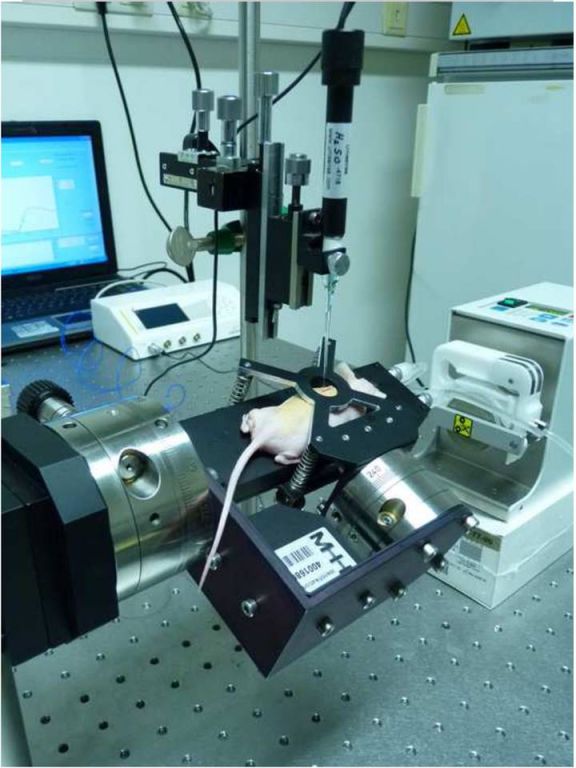博文
金属镁生物材料植入物周围氢气泡特征研究
||||

Fast Escape of Hydrogen From Gas Cavities Around Corroding Magnesium Implants.pdf
由于存在许多优点,作为生物可降解材料金属镁被广泛关注。但由于金属镁降解过程中可释放氢气,在植入物周围可形成气泡,这种情况已经被广泛报道。但是关于这种气泡内的气体成分并不十分清楚,只有60年前少数研究采用并不十分精确的技术检测过这种气体的成分(那个年代不会已经有这种材料吧),现在已经有许多先进技术可以精确测定气体中的成分。为明确这种气体的成分,本研究采用氢气电极和质谱技术分别检测氢气浓度。
连续10天的检测结果发现,即使在气泡形成早期,这种气泡中氢气的浓度非常低。这意味着氢气在形成气泡后迅速和周围气体发生交换。为确认这种推测,采用氢气直接皮下注射,结果发现在注射后1小时大部分氢气都被交换置换(气体中氢气浓度下降),这一结果纠正了这一领域长期的一种认为在金属镁植入物周围是氢气气泡的错误看法。这一研究也有更广泛的意义,过去在潜水医学中,氦氧潜水减压病在形成气泡后,可能发生快速的气体成分交换。而在氢气气泡在氢气成分降低后气体总量没有相应下降,这给直接注射氢气治疗疾病带来一定麻烦,因为气泡的消失速度比较慢,可能对局部组织带来长期影响,当然也可以给使用氢气带来更多联想,例如可以将一种气体释放装置安装到体内,制造出一种长期按照程序给氢气的器材。
Fast Escape of Hydrogen From Gas Cavities Around Corroding Magnesium Implants
Julia Kuhlmanna,
a Department of Chemistry, University of Cincinnati, PO Box 210172, Cincinnati, OH 45221-0172, USA
Magnesium materials are of increasing interest in the development of biodegradable implants as they exhibit properties that make them promising candidates. However, formation of gas cavities after implantation of magnesium alloys is widely reported in literature. The gas composition and the concentration of in these bubbles are not clearly known as only a few studies using techniques not specific for were done about 60 years ago. Currently, many researchers assume that these cavities contain primarily hydrogen because it is a product of magnesium dissolution in aqueous media. In order to clearly answer this question, we implanted rare earth containing magnesium alloy disks in mice and determined the concentration of hydrogen gas for up to ten days using an amperometric hydrogen sensor and mass spectrometric measurements. We were able to directly monitor the hydrogen concentration over a period of ten days and to show that the gas cavities only contained a low concentration of hydrogen gas, even shortly after the formation of the cavities. This means that hydrogen must be exchanged very quickly after implantation. To confirm these results, hydrogen gas was directly injected subcutaneously and most of the hydrogen gas was found to exchange within the first hour after injection. Overall, our results disprove the common misbelief that these cavities mainly contain hydrogen and show how quickly this gas is exchanged with the surrounding tissue.
https://m.sciencenet.cn/blog-41174-622374.html
上一篇:科研思路胜于研究技术
下一篇:读“从整型医生到诺贝尔奖-山中伸弥的研究历程”的感想
全部作者的精选博文
全部作者的其他最新博文
全部精选博文导读
相关博文
- • Minerals线下恳谈会:履践致远、与时偕行——对话中国科学院广州地球化学研究所期刊合作学者
- • 聚英才 建高地 | 北京理工大学“特立青年学者”全球招聘开启
- • 700年后日本或濒临灭绝?日本学者推算预测:届时或仅剩1名15岁以下孩子
- • [转载]【同位素视角】非英语母语学者如何区分’e.g.’, ‘i.e.’, ‘namely’与‘such as’等混淆难题
- • 美国佐治亚大学等机构学者:刈割策略对Bulldog 805紫花苜蓿+Tifton 85狗牙根混播草地产量及品质的影响
- • 美国堪萨斯州立大学、密苏里大学等机构学者研究成果:土壤水分管理策略和品种多样性对紫花苜蓿产量、营养品质和农场盈利能力的影